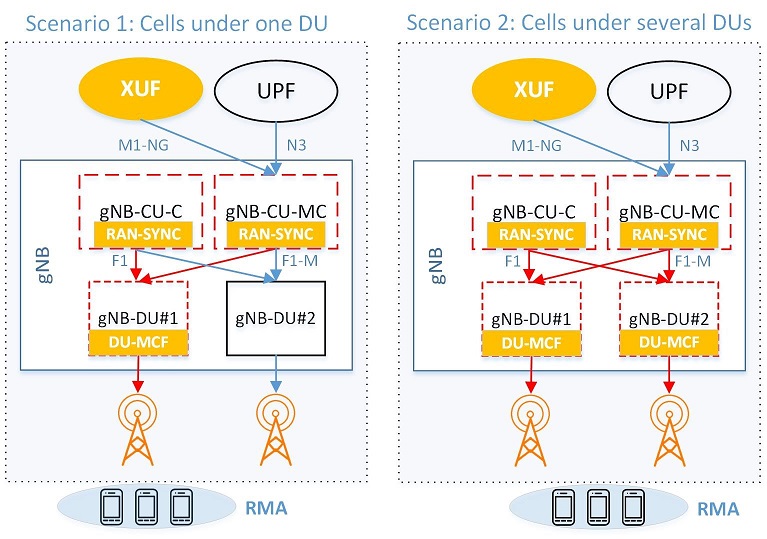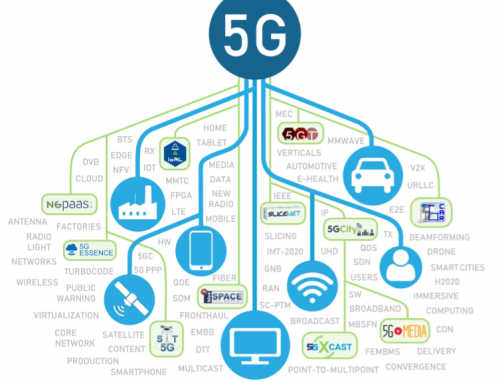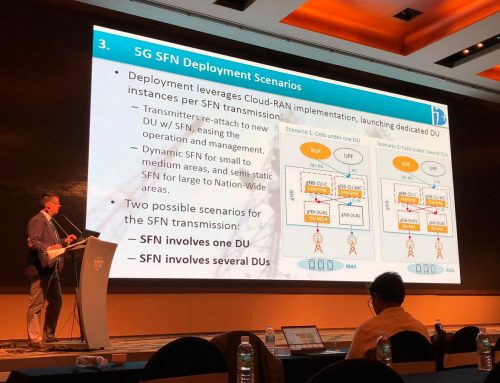5G-Xcast is proud to announce that deliverable D3.3 on RAN Logical Architecture and Interfaces for 5G-Xcast is now released and can be downloaded from this link.
The first 3GPP release of 5G technology (Rel’15), also known as NR (New Radio), was completed in 2018. This release of standards is focused on unicast communications in the core network and point-to-point (PTP) transmissions in the Radio Access Network (RAN). While the unicast communication is the traditional way to deliver content in cellular networks, the radio resources needed to deliver a common IP multicast content to many users will grow linearly with the number of users, causing high load in the air interface. The support of multicast/broadcast is needed for point-to-multipoint (PTM) transmissions in vertical sectors, such as Automotive, Airborne Communications, Internet-of-Things, Media & Entertainment, and Public Warning & Safety systems. In 5G multicast architecture, the future trends in technology and service design should be considered in the design process.
3GPP Rel-15 specifications have standardized the design principles of cloud-native system approach. The key architectural element in RAN design was to extend the distributed base station architecture towards flexible cloud-RAN based protocol functionality where the computing hardware pools are used to take care of the higher layer processing of user plane data traffic and control plane signalling. The split between central units (CUs) and distributed units (DUs) in 5G architecture enables dynamic adaptation of QoS functions depending on the real-time radio conditions, user density and dynamically controlled geographical area for multicast. These architecture enhancements provide a significant opportunity to design an innovative RAN architecture for multicast content in 5G-Xcast project.
The 5G multicast services are required to be supported by multitude of network deployments with increased flexibility, and dynamically adapt in areas where the demand for multicast will change significantly over the time, e.g. moving users and/or stadiums. 5G-Xcast RAN architecture will be aware of the user’s interest to receive IP multicast data and therefore the developed dynamic RAN Multicast Areas (RMA) allow delivery of multicast services wherever needed without eMBMS-type of static deployment on top of the existing RAN. RMA mechanism can consider the user activity, user mobility, number of devices and their geographical distribution.
The multicast/broadcast services over multiple network cells require content synchronization to share the same content among multiple users. 5G-Xcast RAN architecture supports a multi-cell transmission using NG-RAN based synchronization method, where synchronized DUs participate to multi-cell transmission using a single CU as a point for transmission coordination. This approach enables over the air transmission of synchronized multicast/broadcast traffic while fulfilling the QoS targets defined for the traffic flows.
In this deliverable, we present novel technical developments enhancing the 5G unicast architecture to enable efficient selection between unicast and multicast/broadcast transmission modes in dynamic geographical areas using the enhanced NG-RAN architecture based on 3GPP Rel-15 and the architectural and functional enhancements developed during the 5G-Xcast project. Solutions are presented to support also the delivery of Terrestrial Broadcast services within the same 5G-Xcast architecture.
The result is a RAN architecture approach which can adapt to a wide variety of requirements and QoS targets defined according to user demand and traffic flows and network operators and service providers.





